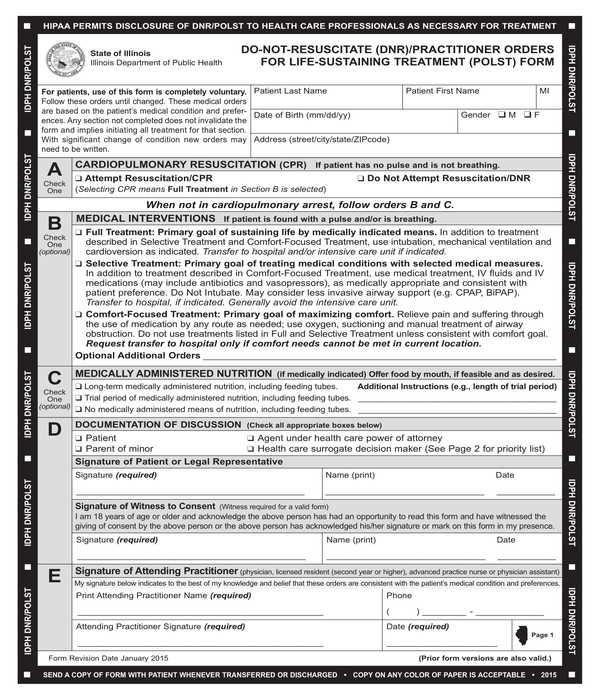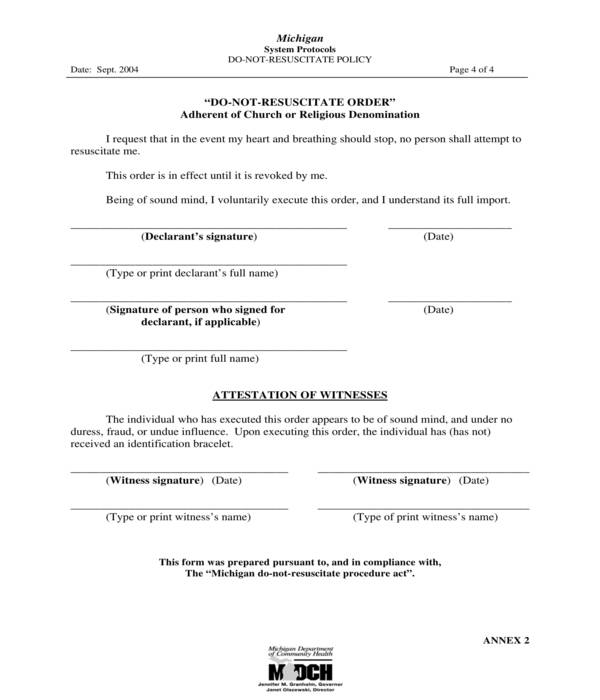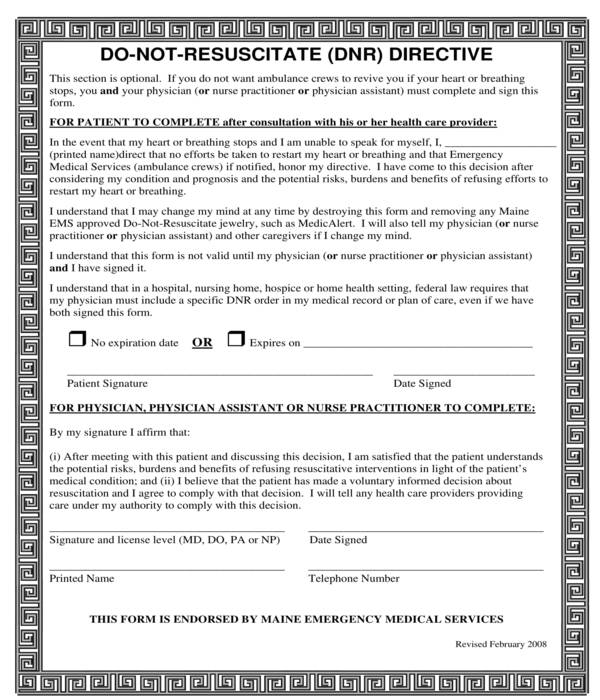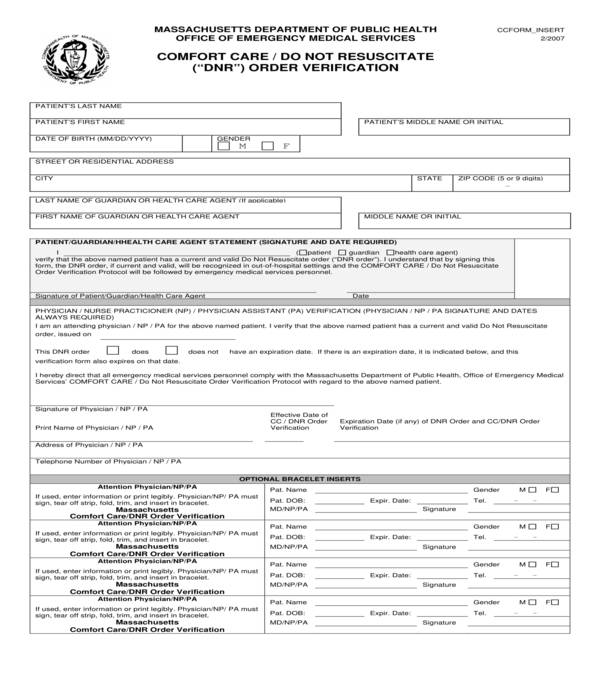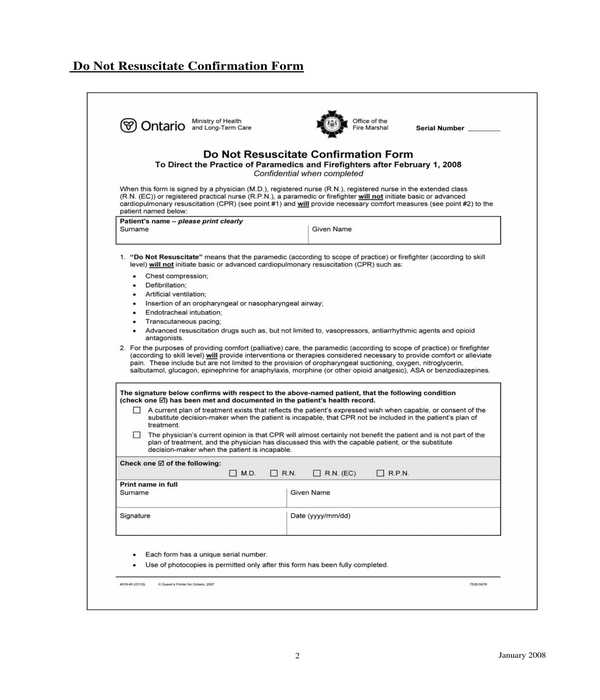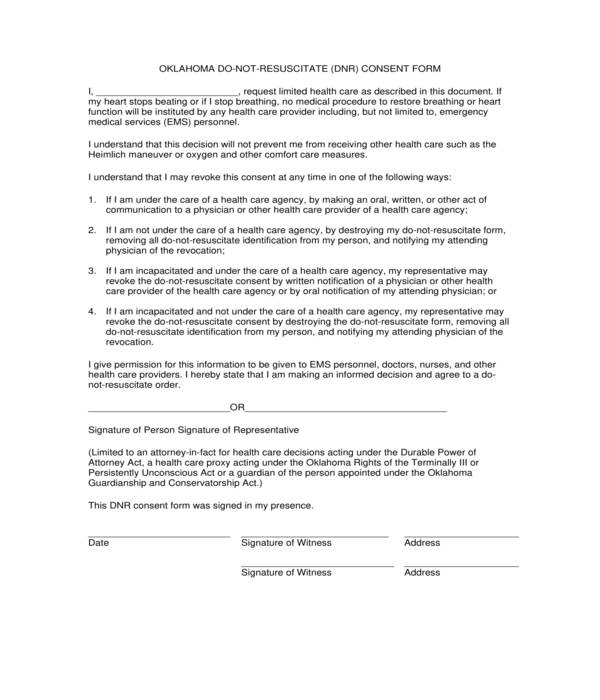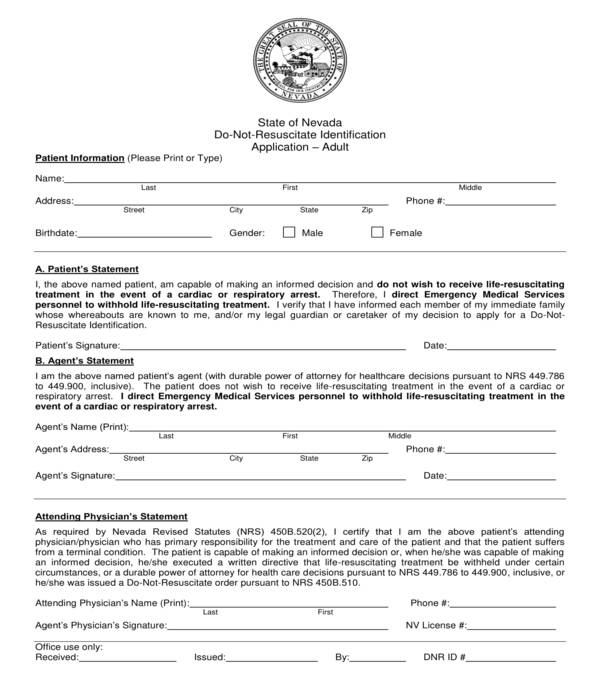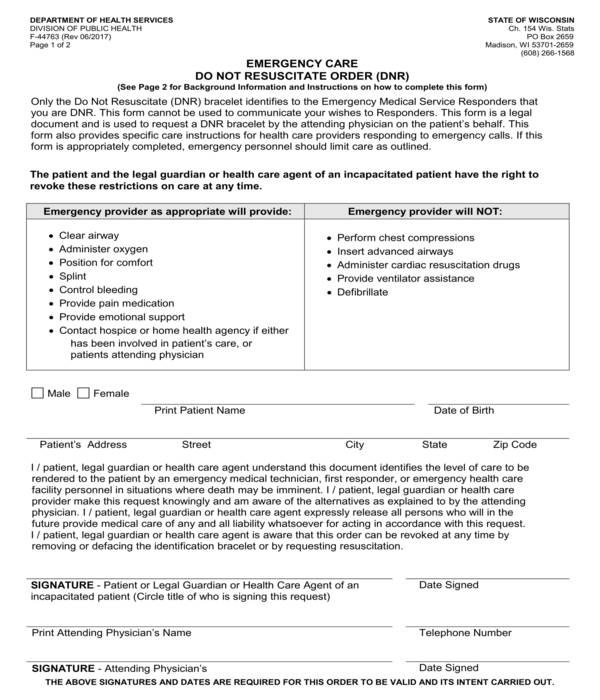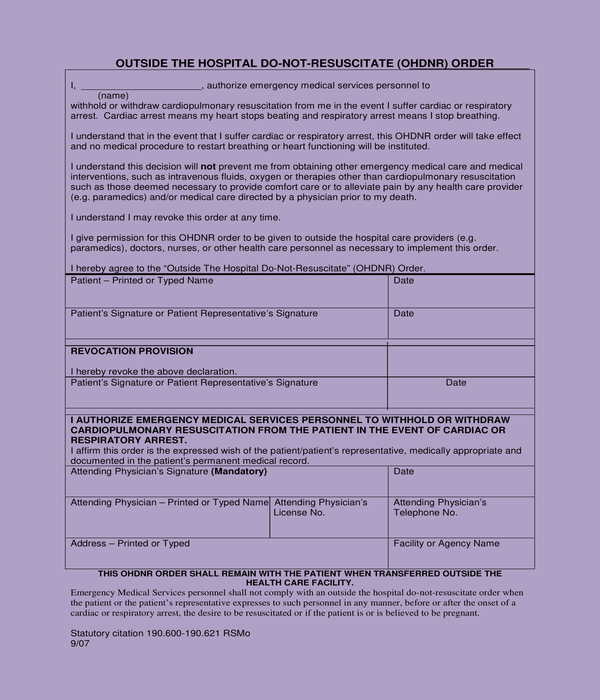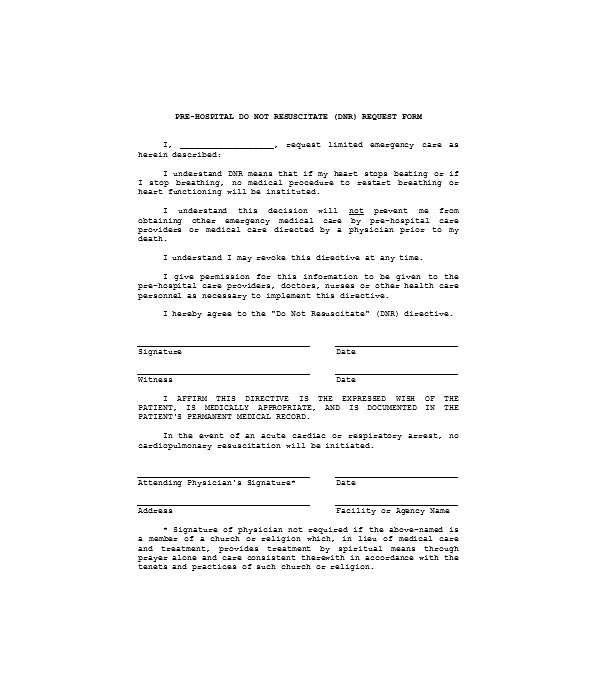Some people have medical conditions or illnesses which could not be fully treated. This leads to a choice of preventing further medical care to be provided, including resuscitation methods. For this, a do-not-resuscitate form will need to be filled out and be signed by the patient and his physician who assessed his condition.
Do-Not-Resuscitate Form Sample
Basic Do-Not-Resuscitate Form
Church Adherence Do-Not-Resuscitate Order Form
What Is a Do-Not-Resuscitate Form?
A do-not-resuscitate form is a type of medical form or document which is used by medical professionals and institutions to record the decisions of a patient and his direct next-of-kin towards not administering medical procedure to restart the patient’s breathing and heart pumping. This means that with a do-not-resuscitate form, the patient will be left alone without any aid from the medical care provider, either in the hospital and clinic or in his own home. Moreover, a witness should also affix his signature on the allotted area of the form to prove that the patient made his final decision or wish on his own will. But, the witness should be someone who is not a relative of a patient who will benefit in any means from the patient’s death.
Do-Not-Resuscitate Directive Form
Do Not Resuscitate Order Verification Form
What’s In Do-Not-Resuscitate Forms?
Do-not-resuscitate forms contain relevant data and information about the patient’s decision and his illness. Specifically, the form will also indicate details as to when the orders in the form will be executed, how the orders can be revoked, as well as the limitations and restrictions in executing the orders. The contact information of the parties involved in the form such as the patient and his physician and authorized emergency contact person will also be in the form. In addition, if the patient is a minor or is not mentally and physically capable of filling out the form, then his legal guardian or parent must sign the form.
Varieties of Do-Not-Resuscitate Forms
The different varieties of do-not-resuscitate forms differ on the data and contents which are defined in the form. Below are some of the common varieties that medical practitioners, staff, and patients use:
Authorized Durable Do Not Resuscitate Order Form – If a document is deemed durable, then it means that the terms, statements, and conditions defined in the form are long-lasting and can withstand regardless of the situation of the patient. The requests, wishes, and orders in an authorized durable do not resuscitate order form, however, can only be carried out by a licensed medical professional and healthcare provider. The details to be stated in this form variety include the patient’s name, the date when the form was used, the certifications of the patient, and the signatures of the patient along with his physician and the person who is authorized to consent on behalf of the patient. Three copies of the form must be completed in order for each party to have their own copy of the form which will serve as their guide upon its execution.
Authorized Durable Do Not Resuscitate Order Form
Do Not Resuscitate Confirmation Form – This form is not only to be honored by medical professionals but also firefighters and any individual who is present and will be providing first aid to a patient. In order for the form to the considered valid by the State or the country, it should have a set of seven-digit serial number which identifies where it is recorded and when it was obtained. Additionally, the form will also state the purpose of the DNR or do-not-resuscitate order and medical directions which must be followed by the individuals who will be administering medical care to the patient. The form also indicates points which should be read and be understood by the parties involved which. The points define the resuscitation interventions, restricted initiations, the confirmation of the patient’s health care provider, and the treatment plans for the patient.
Do Not Resuscitate Confirmation Form
Do-Not-Resuscitate Consent Form – Two pages comprise this form which should be signed by the patient, the physician, and the witnesses of the patient’s decision. Furthermore, the form will indicate that the patient has decided to request for limited healthcare if ever he stops breathing or if his heart will stop beating, as well as his understanding that he will still be receiving other procedures which are not directly related to resuscitation such as comfort care measures. The accepted methods of revoking the consent are also enlisted in the form along with the permission granted of the patient towards the usage and distribution of the consent form to other doctors, clinic staff and personnel, and all involved health care providers.
Do-Not-Resuscitate Consent Form
Do-Not-Resuscitate Identification Application Form – Some medical institutions, States, and countries prefer to collect the basic data of the patient along with his wish and request. For this, a do-not-resuscitate identification application form will be used which is intended for documenting the patient’s details and his decisions. In the form, there are four sections to be completed. The first section is the patient information section which is for indicating the patient’s full legal name, residential address, contact number, date of birth, and gender. The second, third and fourth sections, on the other hand, are for the statements of the patient, his representative or his care agent, and his attending physician. The statements focus on affirming the data disclosed in the form and the directions mandated by both parties which should be fulfilled by healthcare professionals.
Do-Not-Resuscitate Identification Application Form
Why Use Do-Not-Resuscitate Forms?
DNRs or do-not-resuscitate forms are important because these documents serve as a precaution and an information sheet for any medical care provider during emergencies. Directions, details, and all other information which should be informed to the care provider will be stated in the form as well as the contact information of the people who must be reached out such as the patient’s physician, representative, and the physician’s healthcare agent.
Emergency Care Do-Not-Resuscitate Order Form
Outside Hospital Do-Not-Resuscitate Order Form
Do-Not-Resuscitate Request Form
On the other hand, medical institutions and healthcare providers can consider using do-not-resuscitate form templates. The templates can be customized or can be used as a guide in making a do-not-resuscitate form from scratch to be used for the patients in the institution. In addition, a template will also ease the process of determining what to include in the form since the template already has suggestive contents and placeholders.
Related Posts
-
FREE 8+ Sample Medical Renewal Forms in MS Word | PDF
-
FREE 9+ Sample Medical Permission Forms in PDF | MS Word
-
FREE 9+ Sample Medical Records Release Forms in PDF | MS Word | Excel
-
FREE 6+ Sample Army Dental Forms in PDF | MS Word
-
FREE 8+ Sample Medical Necessity Forms in PDF | MS Word
-
FREE 5+ Sample Medical Combining Forms in MS Word | PDF
-
FREE 12+ Sample Medical History Forms in PDF | MS Word | Excel
-
FREE 9+ Sample Medicare Application Forms in PDF | MS Word
-
FREE 10+ Sample Medicare Forms in PDF | MS Word
-
FREE 9+ Sample BSA Medical Forms in PDF | MS Word | Excel
-
FREE 11+ Sample HIPAA Forms in PDF | MS Word
-
FREE 9+ Sample Injured Spouse Forms in PDF
-
FREE 9+ Sample Medical Choice Forms in PDF | MS Word
-
FREE 9+ Sample Medical Application Forms in PDF | MS Word | Excel
-
FREE 21+ Sample Medical Records Release Forms in PDF | Word | Excel


